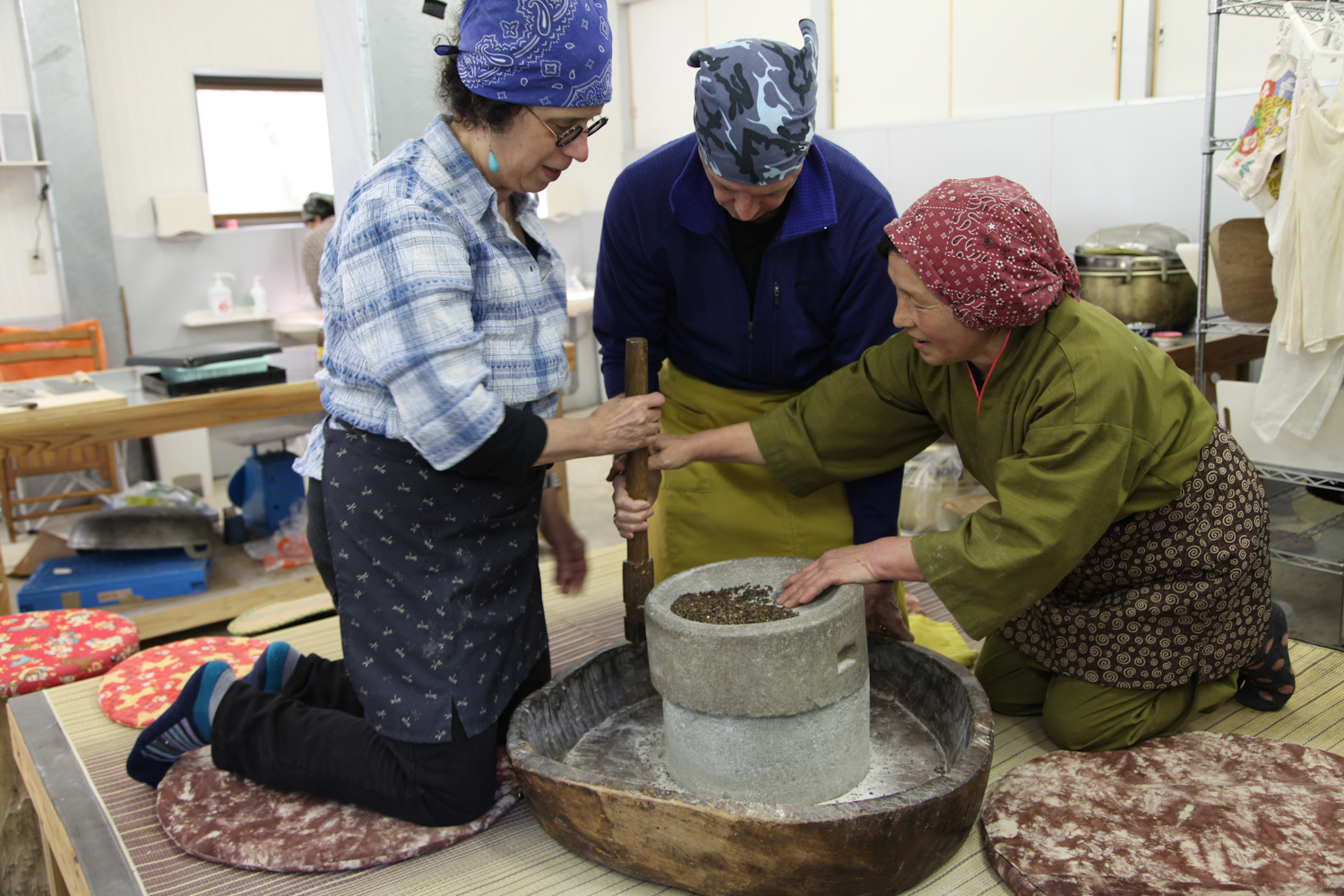Elbow Deep in Buckwheat: An Immersion in Japan

I look up at her hopefully, but she shakes her kerchief-covered head. The dough still isn’t thin enough. I’m up to my elbows in buckwheat flour, my arms ache from pushing a rolling pin, and I can’t imagine how the raw noodles can get any thinner without disintegrating. We’re standing in a kitchen high in the mountains of Japan’s Shikoku Island: one American woman who has little experience working with dough of any kind, and one Japanese woman who’s been making perfect soba noodles for decades. She sighs, takes the roller out of my hand, sprinkles a little more flour on top of my mess of dough, and expertly, rhythmically, shaves another few millimeters off the top. It’s now paper-thin, nearly translucent, and ready to be folded, cut into noodles, and cooked. I stare in awe, then notice that my cooking class compatriots, who have just gone through the same routine with the other instructors, are smiling at me encouragingly.
Earlier in the day, our group of travelers made our way from the Pacific coast town of Kochi to this hamlet in the Iya Valley, one of Japan’s most hidden regions, an area of steep hillsides and deep gorges. We worked up healthy appetites by winding along narrow roads and exploring vine bridges built originally in the 12th century by the fugitive Heike clan as protection from their Taira rivals. But before tending to our hunger, we would first have to prepare the core of our lunch.
Under the guidance of four cheery yet business-like, 60-something Japanese ladies, we turn buckwheat into flour using an old grinding stone, mix in water to transform the flour into dough, kneed it, roll it flat, and slice it into even, narrow strips. Our instructors, who speak no English, seem equally disconcerted and entertained by our lack of skill. They correct us and direct us and we all repeatedly dissolve into fits of laughter. None of us visitors would have guessed that making noodles would be so challenging. We check on each other’s work along the way, with good-natured teasing thrown in. By the time we drop our noodles into the giant pot of boiling water, we defer completely to the experts, letting them pull out the noodles at just the right moment.
A few minutes later, we’re seated in the adjoining dining room savoring our creations, topped with locally grown produce including horsetail, fern, and kumquat. Our noodles may not be quite up to our hosts’ exacting standards, but they certainly taste delicious. And while we enjoy them, one of our instructors serenades us with a folk tune traditionally sung when people would grind buckwheat. We leave with our stomachs and our hearts full, feeling closer to the customs of the country and to these four women who shared their expertise—and ways of life—with us.
Making soba noodles was just one of the hands-on experiences during our trip that immersed me in Japan. Whether it was preparing classic wagashi sweets or practicing calligraphy in the sixth-century Saihō-ji Temple while monks chanted a sutra, these activities got me to step out of my comfort zone and try something unfamiliar. With all of my senses and my fingers engaged, everything around me sprang into sharp focus and I was able to connect with the culture and the people around me in a way I never could have by simply watching or listening. Though I probably will never make soba noodles from scratch again, remembering that lesson on Shikoku, and our other hands-on highlights, transports me straight back into the heart of Japan.

